#John Conway
Text

No High School drama for old Iguanodons.
#coproliteposting#paleoart#vintage paleoart#iguanodon#High School#Walking With Dinosaurs#disney's dinosaur#John Conway#Wayne Barlowe#Is that supposed to be a Baryonyx or something?
17 notes
·
View notes
Text
@anicemyth you're about to make us soooo autistic about this you don't even know bless you
so group theory: this is a very rudimentary explanation but in mathematics a group describes all the ways a structure can be symmetric aka every operation or transformation that can be done on a structure while still it remains unchanged. for example a symmetry of an equilateral triangle would be mirror flipping it on its axis or rotating it 120 or 240 degrees. the untransformed state of the structure (e.g. rotating said triangle by 0 or 360 degrees) is also counted as one of the total symmetries within the group. There's a lot of detail in the defining of this regarding the arithmetical and algebraic behavior of groups that the resources I'm going to add at the end will surely do a better job of than I could.
A group of these symmetries can be broken up into "building blocks" similarly to how an integer can be broken down into its prime factors. These building blocks of groups are known as simple groups. putting aside the fact that there are infinite simple groups bc let's not even go there - the monster group is one of the finite simple groups.
through an incredible mathematical undertaking it has been proven that we have discovered all the possible finite simple groups that can exist. they fall into categories based on their properties and this categorization is depicted in something that looks a lot like a periodic table of elements:
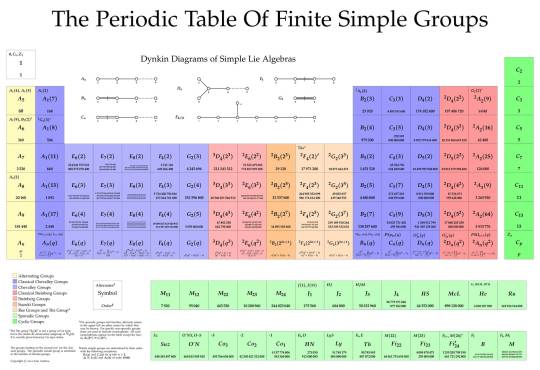
in the colored columns are the 18 assorted categories of group - cyclic, alternating, etc, but at the bottom the 2 rows in light green show the sporadic groups which are 26 groups that do not fall in any of the above categories. at the bottom right is the monster group.
the reason why this is crazy - the numbers listed at the bottom of each box there are the total number of symmetries contained within the group. for an equilateral triangle like I mentioned above you get 6 symmetries including both rotational and reflectional symmetries and including the baseline state of the triangle without any transformation having been done on it.
The monster group? Contains about. 8 x 10^53 symmetries. That is
808,017,424,794,512,875,886,459,904,961,710,757,005,754,368,000,000,000
symmetries. what the fuck. both massive and specific. if that triangle with 6 symmetries is 2 dimensional - with this many symmetries how big must this monstrous object be?
196,883 dimensions.
in addition to that the monster group actually contains (including itself) 20 of those 26 sporadic groups. (Fun fact those groups contained within the monster have been dubbed the Happy Family with the 6 outliers being named the Pariahs lmao). it's notable also bc it is very difficult to represent it concisely compared to other finite simple groups including the rest of the sporadics.
so it's just this.... thing. that is out there. we know what it is, we know its incredibly specific parameters, but of course we don't know WHY it's there or WHY those are the numbers you arrive at (if thats even a reasonable question to ask), it looks very arbitrary but it is ultimately a fundamental mathematical entity regardless of how inelegant it may seem, the universe is an interesting place
this weird abstract yet very specific structure has connections to other fields of mathematics - it has a connection to modular functions as described by the monstrous moonshine conjecture. yes it's actually called that and it is waaay above my paygrade but this somehow connects to a 24-dimensional variant of string theory (note I absolutely hate string theory for unrelated reasons but the mathematics of it is very interesting) in some way.
in short there exists an incredibly high dimensional object with an obscene number of symmetries that can can be used in tandem with something from a seemingly totally unrelated area of mathematics (the modular j-function) to describe a physics theory. ?????????? they called it moonshine bc they thought it was an absolutely batshit thing to even consider but apparently it works
that is my best attempt at explaining this so here are some resources I really recommend:
youtube
youtube
additionally I'd like to just plug John Conway as a whole here he's in the first video linked talking about his work regarding the monster group and the moonshine conjecture. you can find him on the channel speaking on other topics including the game of life which is an unrelated but very interesting cellular automaton that is available free online to be played with. his group theory work is what stands out to me though, he sadly passed of covid a few years back at an old age but he is one of my favorite mathematicians of all time not only because of his work but also because he just seems like a chill fucking guy
my fanciful conclusion is like. this Thing evokes in my mind images of angels or eldritch horrors or what have you. vast and incomprehensible it dwells in a space so complex it defies any human understanding beyond the mathematics used to describe it. it is beautiful and unthinkable and perhaps i want to kiss it. the end
(If anyone with a better mathematical background than us which is not at all a high bar to set wishes to add to this please do!)
19 notes
·
View notes
Text
Conway Tangle
Andrew Geng over on Mathstodon shared an applet he made for Conway's Rational Tangle. Two ropes. Twisting adds one. Turning gives the negative reciprocal. So twist, twist, turn gets 0->1->2->-1/2.
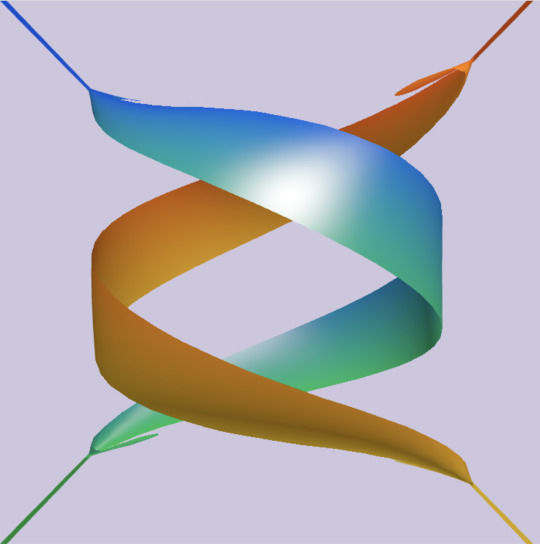
Then twist 1/2, turn -2.

So you ought to be able to get back to zero by twist, twist. So you can make any fraction with these two moves, and untangle any fraction, turning and twisting in the same direction. One of the most fun bits of math I have ever seen or done with learners.
So -1/4: how would you make it? How would you solve it?

9 notes
·
View notes
Text

John Conway (Australian, 1981) - Doge (2022)
29 notes
·
View notes
Text
she gosper on my glider gun til I discover a never-repeating pattern
14 notes
·
View notes
Text
John Conway, A Survey of Life-Forms, Game of Life, 1970

John Conway (1937-2020) was an English mathematician who is best known for his invention of the cellular automaton system Game of Life. This printout of GoL typologies would have been early research, people have since done research showing that the system is Turing complete.
Found via are.na (link below), which is rapidly becoming a favorite tool. You can find me at are.na/marius-watz
2 notes
·
View notes
Text
Winning Ways for Your Mathematical Plays (Books, Elwyn Berlekamp, John Conway & Richard Guy, 1982)
The original two-volume version of THE book on mathematical games.
You can watch a video summarizing the start of Volume 1 and revealing just how mindblowing this whole thing is here.
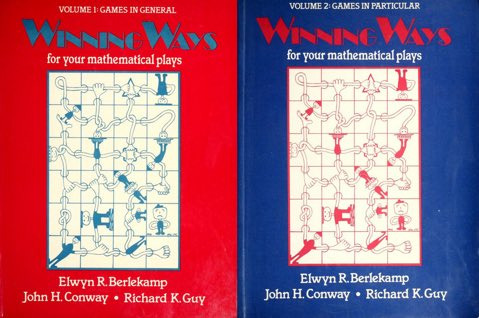

#internet archive#book#books#math#maths#mathematics#recreational mathematics#john conway#board game#board games#weird books#1982#1980s#1980's#80s#80's
2 notes
·
View notes
Text
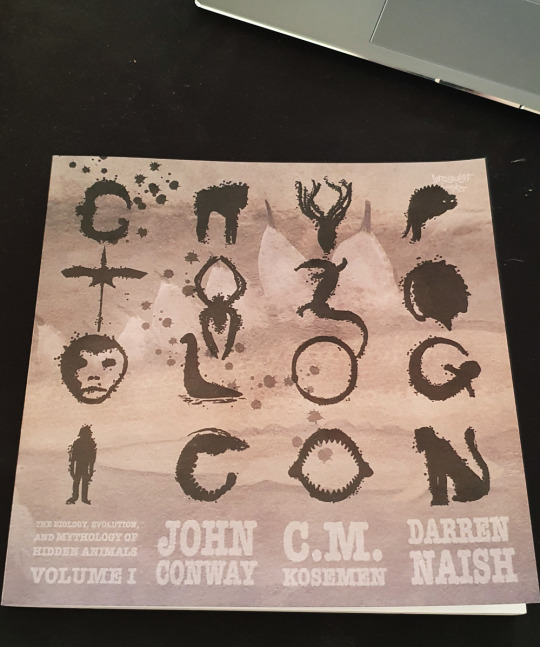
71st Book I Read in 2023
Title: Cryptozoologicon
Authors: John Conway, C.M. Kosemen & Darren Naish
Notes: I loved this book! Definitely gonna be keeping it in my shelf.
#Cryptozoologicon#John Conway#C.M. Kosemen#CM Kosemen#Darren Naish#nonfiction#engelska#english#book#books#bookblr#reading#2023
1 note
·
View note
Text
Inventing Game of Life (John Conway) - Numberphile
youtube
1 note
·
View note
Text
if Elly and Aiden make out at the end does that mean Argylle and Wyatt also do the same in the books???
#argylle#agent argylle#henry cavill#elly conway#aiden wild#argylle movie#john cena#bryce dallas howard#sam rockwell
307 notes
·
View notes
Text

Remember Big Chungus? The Bugs Bunny adjacent meme that existed for a hot minute during the early Oligocene? Paleontology Coproliteposting remembers.



Okay, the last one wasn't from Paleontology Coproliteposting, but it's still a dinosaur so I'd argue it counts.
#ye olde meme#coproliteposting#paleomemery#memes#big chungus#dinosaurs#nuralagus#john conway#seriema#I wish I could remember who painted that tyrannosaurus but I'm drawing a blank
7 notes
·
View notes
Text

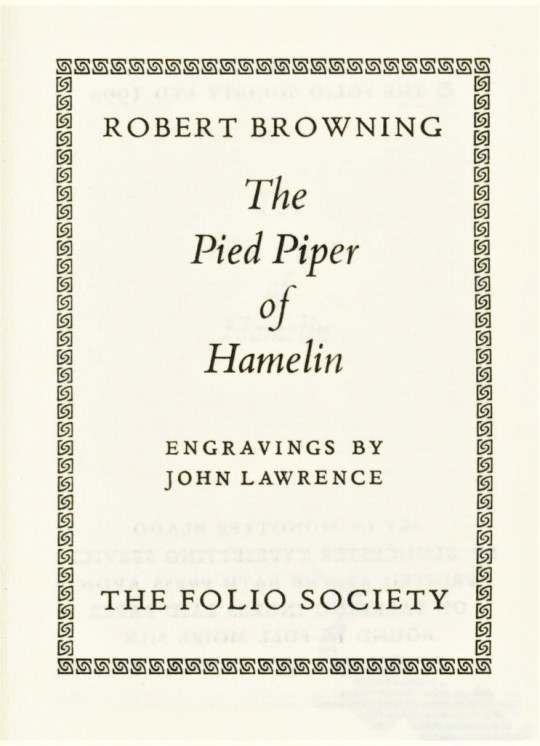
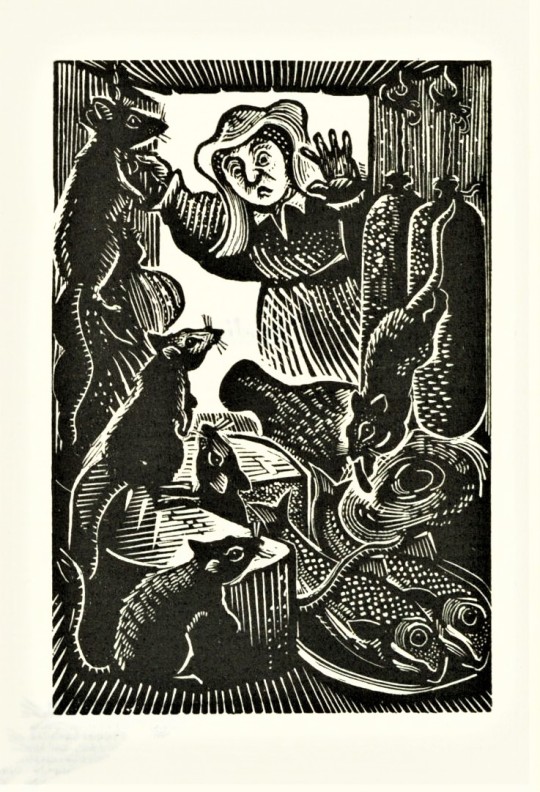





Wood Engraving Wednesday
JOHN LAWRENCE
Once again we turn to the fanciful engravings of English illustrator and wood engraver John Lawrence (b. 1933), this time from a small (4.25" x 3") 1992 Folio Society edition of Robert Browning's version of The Pied Piper of Hamelin, printed at The Bath Press in Bath, England on Fabriano Ingres laid paper. The engravings themselves are only 3" x 2", but they are vivid and richly detailed.
John Lawrence, whose career spans nearly 70 years, is one of England's most-respected living wood engravers. He has illustrated well over 200 books and has taught his craft at the Brighton School of Art, Camberwell School of Art, and Cambridge School of Art from the 1960s to 2010. He has influenced generations of noted contemporary wood engravers, and was himself a student of Gertrude Hermes (view some wood engravings by Hermes we have posted).
Our copy of the Folio Society's Pied Piper is yet another donation from the estate of our late friend and colleague Dennis Bayuzick. The book was originally bound in full moire silk by Hunter and Foulis, but our copy was specially rebound in 2001 by English bookbinder Stephen Conway (see below).
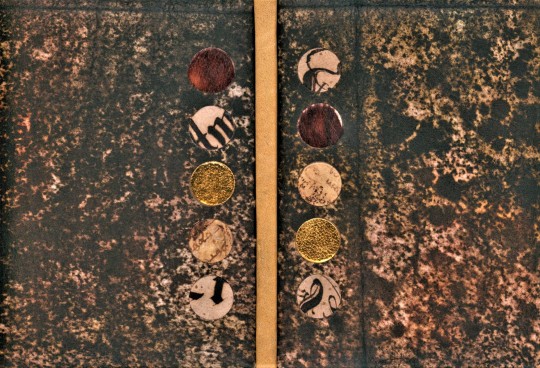
View more posts with wood engravings by John Lawrence.
View other illustrations for the Pied Piper by Kate Greenaway and Sarah Chamberlain.
View other books from the collection of Dennis Bayuzick.
View more posts with wood engravings!
#Wood Engraving Wednesday#wood engravings#wood engravers#John Lawrence#Robert Browning#The Pied Piper of Hamelin#Pied Piper of Hamelin#The Folio Society#Folio Society#The Bath Press#Fabriano paper#bookbinding#Stephen Conway#Dennis Bayuzick
260 notes
·
View notes
Text
Math is a Game
One of my favorite quotations. From Richard J. Trudeau, author of Dots and Lines/An Introduction to Graph Theory.
Pure mathematics is the world's best game. It is more absorbing than chess, more of a gamble than poker, and lasts longer than Monopoly. It's free. It can be played anywhere - Archimedes did it in a bathtub.

This is how he pitches it in Dots and Lines as well, which is written to be accessible to "mathematically traumatized". He really believes that everyone can and should do pure mathematics.
It pairs really well with my favorite quotation from John Conway...
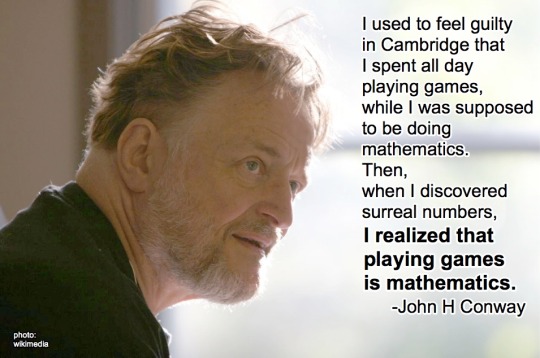
17 notes
·
View notes
Text
BHOC: MARVEL TALES #101
This issue of MARVEL TALES presented me with a slightly more manageable conundrum. I didn’t own a copy of AMAZING SPIDER-MAN #124, the issue that was reprinted here, but I had read it. I believe my school buddy Don Sims had a copy, and I’d read it at his place at some point. Consequently, this issue would hold very few surprises for me. But it was still a relatively simple choice to drop 35 cents…

View On WordPress
43 notes
·
View notes
Text

Grease
Art by Suspiria Vilchez
#Comics#Suspiria Vilchez#Posters#Film#Grease#John Travolta#Olivia Newton John#1950s#50s#Art#Stockard Channing#Jeff Conway#Didi Conn#Hollywood#Music#Musicals#Theater
25 notes
·
View notes
Note
Since I’ve become aware of it due to the number tournament, do you have any recommendations for YouTube videos about game theory at an introductory level?
one of my favorite videos of all time is this one, which explains some introductory concepts in an approachable way that still gets across the sense of how massive this particular world of math is
youtube
(I recommend anyone who likes jan Misali videos to watch through every video in my inspiration playlist. they are all videos I keep finding myself coming back to)
there's some more formal lecture type videos out there too if you look for them (this talk by John Conway talks about how the study of games led to the discovery of the surreal numbers) but for an absolute beginner I think this hackenbush video does a good job giving a tour of what the field has to offer
225 notes
·
View notes